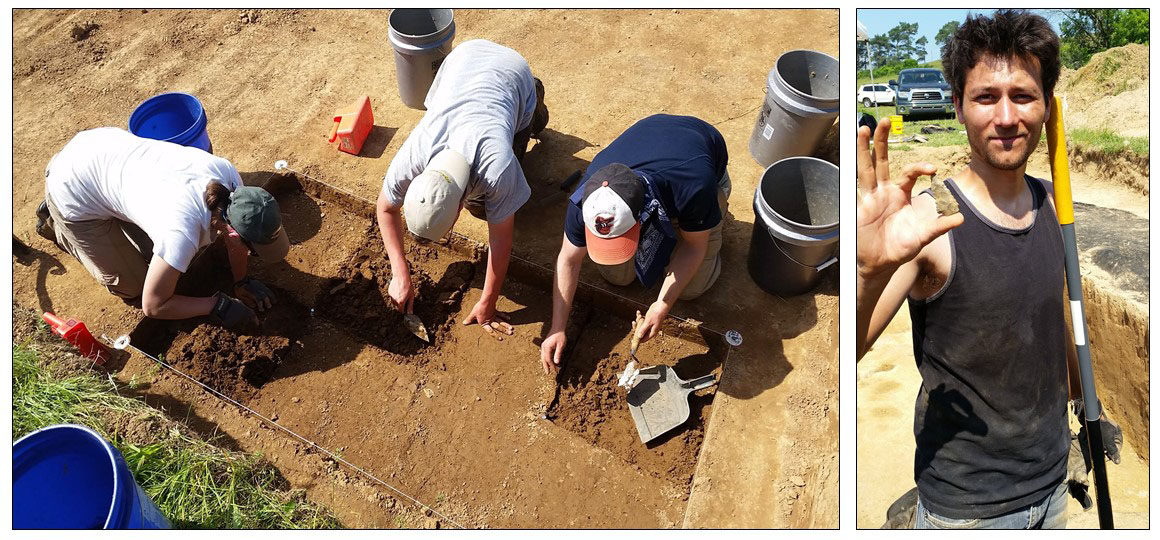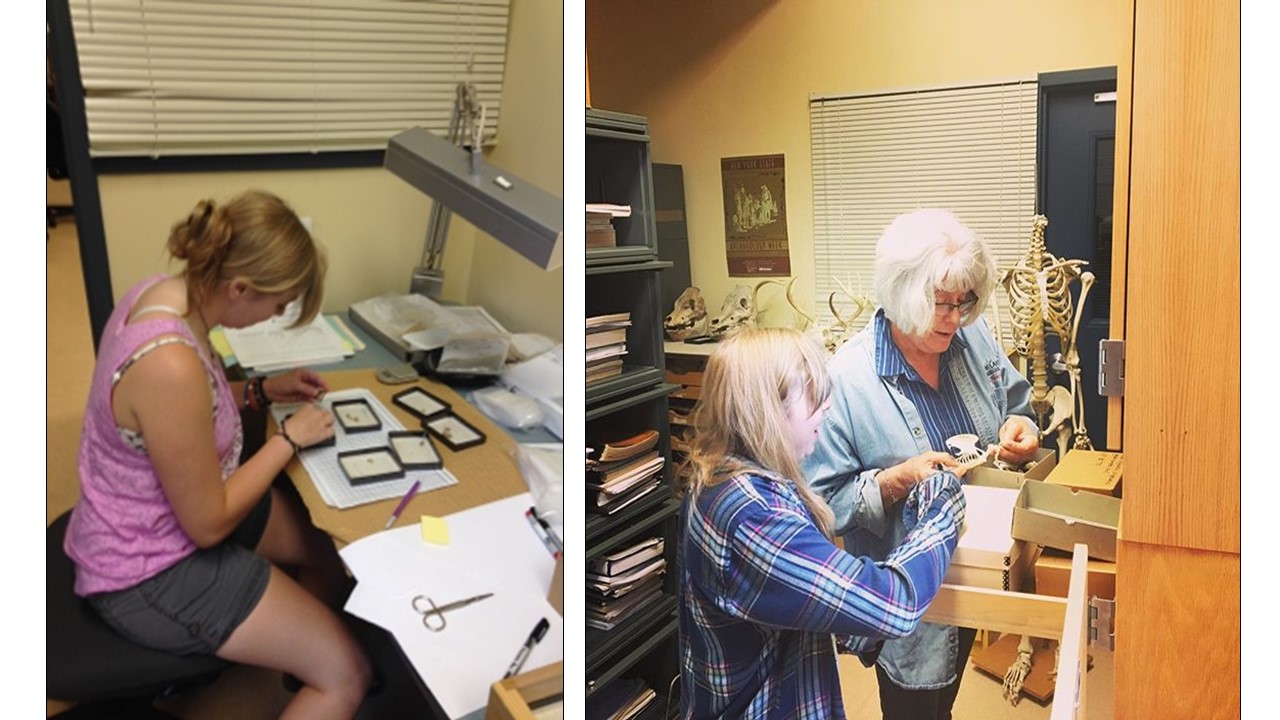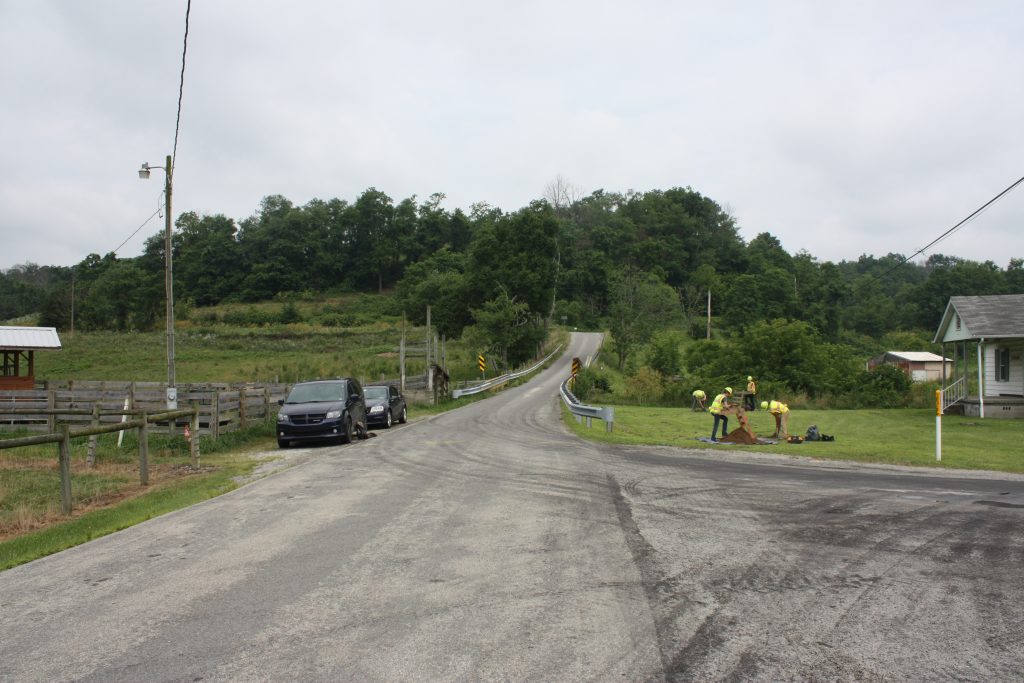After classes ended this spring, I had the opportunity and privilege to help supervise the Juniata College Archaeological Field School alongside my former classmate Kate Peresolak and under the direction of Dr. Jonathan Burns of Juniata College. Located in State College, Pennsylvania, the project was a unique experience for a field school because it was a real-world Phase III archaeological project serving as a mitigation for a bike path that will soon have an adverse effect on the site. The James W. Hatch Site, named for the late Penn State University professor, is a lithic reduction site. In other words, this location served as a place where Native Americans would bring nodules of local lithic materials to be worked into stone tools. In this case, the local materials were being quarried from a source of jasper known as the Tudek Quarry at the top of the hill from the Hatch Site.
This site was first discovered during a Phase I and subsequent Phase II project in the summer of 2015 by the PennDOT Highway Archaeological Survey Team (PHAST). This work determined that the Hatch Site was eligible for the National Register of Historic Places and the threat of destruction by the bike path required that some sort of mitigation of the site be conducted. In the spirit of creative mitigation, it was decided that an excellent way to include the public, educate students, and of course save money was to make the project a field school for undergraduate students. A total of 11 students participated in the field school from Penn State University, Juniata College, and Virginia Commonwealth University. Also in the mix were a couple of hired field technicians, the PHAST crew (which consists of four IUP grad students), and several hard-working volunteers throughout the four-week excavation.

Left to Right: Kristen, Brendan and I working in the offset test units that would later yield the slag buried deep in the buried plow zone and (far right) VCU student Luciano with the Kirk corner-notched point
We began this project by mechanically stripping the modern plow zone in two 10x10m blocks. Within these blocks, we used a total station to set up two 5x5m blocks to be excavated. The original plan was to excavate 1x1m test units within the blocks divided into 50x50cm quadrants and each screened in 10cm levels. We did this for about a day or two until we found some large chunks of slag at the bottom of the stratum previously thought to be undisturbed. Upon this discovery that the stratum was actually an older plow zone, our strategy changed to excavating the test units by stratum rather than excavating in 10cm levels by quadrants. Once we got through the deepest plow zone we returned to our original strategy in the clay beneath. Unfortunately, no diagnostic artifacts were found in the intact stratum, but we did find some projectile points in the old plow zone, including a Kirk corner-notched point! This gave the site an Early-Middle Archaic occupation and made the students more excited and motivated to keep up their hard work in the unpredictable weather conditions of central Pennsylvania. We also collected a few charcoal samples from features in the clay that will be radiocarbon-dated.

Left: Bird’s eye view of Blocks A and B with the drone. Right: the crew hard at work in the last week of excavation
This project was great for many reasons, but I will only list three main points here. First, it allowed students an opportunity to work on a real CRM project with a deadline. Second, we all had the opportunity to learn more about using a total station and how much time it saves. Third, the Hatch Site is one of many sites associated with my Master’s thesis, which involves synthesizing data from over 40 nearby archaeological sites unofficially collectively known as the Houserville Archaeological District. The result of my thesis will include an official nomination of the district to the National Register of Historic Places on the basis of its significance as a stone tool production locale in relation to the Tudek Quarry. The field school was an incredible way to get the public involved and teach students while conducting a necessary archaeological endeavor to collect data that would otherwise be lost forever. For more information and photos from the project check out the Juniata College Archaeology Facebook page and The Eclectic Bear blog by PennDOT archaeologist Joe Baker. A big thanks to all of the great students, crew, and volunteers who helped us move so much dirt, and to the many visitors we had over the four-week field school.

Group photo of the students and crew taken in Block A
IUP Anthropology Department






